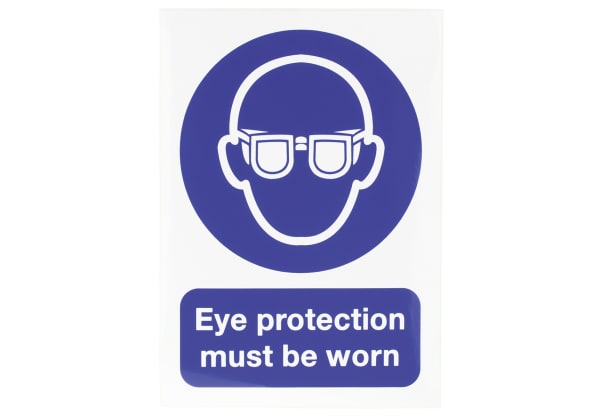- Published 20 Feb 2024
- Last Modified 20 Feb 2024
- 8 min
Fire Safety in the Workplace
Fire safety in the workplace is a critical concern for businesses. Understanding and implementing effective fire safety measures can prevent disasters, save lives, and ensure compliance with legal requirements.

Reviewed by David Carmichael, Solution Engineer (February 2024)
In the workplace, fire safety is imperative. Effective fire safety measures protect individuals but also safeguard company premises and equipment. Recognising potential fire hazards and implementing appropriate safety precautions is crucial to minimising risk and preventing fire-related incidents.
This guide explains the essentials of workplace fire safety. It covers common fire hazards and their prevention, legislation and responsibilities, and key safety procedures.
Why is Fire Safety Important in the Workplace?
Fire safety at work is vital for protecting employees, customers, and businesses. Moreover, maintaining a safe workplace is also a legal requirement.
The impact of fire incidents on businesses is far-reaching. Beyond the potential for injury or loss of life, workplace fires can cause significant disruption to operations. This can lead to many knock-on effects, from financial loss to inventory damage and even full business closure. After all, the aftermath of a fire can be devastating and require costly repairs and replacements, not to mention a lengthy rebuilding process.
Statistics on fire-related incidents in workplaces underline the seriousness of the issue. According to statistics released by the UK government, a total of 1842 fires on industrial premises were reported in the year 2021-2022.
Fire Hazards in the Workplace
Understanding the potential fire hazards in your workplace is the first step towards creating a safe environment. However, it's also important to note that fire hazards can vary widely depending on the nature of the business.
Common fire hazards include:
- Electrical equipment: Faulty electrical equipment represents one common fire hazard in the workplace. Overloaded circuits, frayed wires, overheating machinery, and damaged plugs can all lead to electrical fires
- Flammable materials: Another significant fire hazard is the improper storage and handling of flammable materials
- Smoking: Smoking in prohibited areas poses a serious fire hazard. Improperly extinguished cigarette butts can ignite flammable materials, leading to fire outbreaks
- Poor housekeeping: Inadequate cleanliness practices can contribute to fire hazards. Cluttered workspaces obstruct fire escape routes and increase the risk of fires spreading
- Faulty safety equipment: Damaged or malfunctioning fire safety equipment, such as fire alarms or extinguishers, can compromise workplace safety
Who is Responsible for Fire Safety in the Workplace?
Fire safety in the workplace is a crucial aspect that must be addressed by both employers and employees. Understanding the legal responsibilities of each party is essential to ensuring a safe working environment.
Legally, responsibility for fire safety in the workplace lies with the employer or the person in control of the premises, known as the 'responsible person'. They are tasked with ensuring adequate fire safety measures are in place and all legal requirements are met. This includes:
- Conducting regular fire risk assessments to identify potential hazards
- Implementing appropriate measures and arrangements to minimise fire risk
- Providing employees with fire safety training and awareness
- Establishing evacuation procedures
- Ensuring the availability and maintenance of fire detection systems
What Legislation Covers Fire Safety Requirements in the Workplace?
Understanding what legislation covers fire safety in the workplace is essential for employers to create a safe working environment. Specific legislation is in place to ensure employees' safety and well-being.
The Regulatory Reform (Fire Safety) Order 2005 is the primary UK legislation governing fire safety at work. This order outlines the responsibilities of employers, building owners, and occupiers to ensure fire safety measures are in place and regularly maintained.
Another relevant piece of legislation is the Health and Safety at Work Act 1974. This sets out employers' general duties to protect employees' health, safety, and welfare. It also includes the requirement to assess and manage fire risks in the workplace.
Additionally, employers should familiarise themselves with the Management of Health and Safety at Work Regulations 1999, as well as the relevant British Standards. BS 9999 and BS 5839 provide guidance on fire safety design, installation, and maintenance.
By staying informed about fire safety in the workplace legislation and regularly reviewing and updating fire safety measures, employers can create a safe working environment and protect employees from potential harm. Understanding which pieces of legislation cover fire safety in the workplace is the first step towards implementing the necessary safety measures.
What are the Legal Requirements of Employees in the Workplace When It Comes to Fire Safety?
Employees also have a duty to cooperate with employers in maintaining fire safety. They must adhere to the fire safety legal requirements of employees in the workplace and be proactive in fire prevention to contribute to a safe working environment. This includes:
- Following established fire safety protocols
- Participating in fire drills
- Reporting potential fire hazards or incidents
- Using fire safety equipment correctly
- Complying with any fire safety training and instructions
How to Prevent Fire Hazards in the Workplace
Measures to help prevent workplace fire hazards include:
- Conducting regular fire risk assessments
- Regularly inspecting and maintaining electrical equipment
- Safely storing flammable materials such as chemicals, fuels, and solvents in designated areas away from ignition sources
- Ensuring effective housekeeping practices including regular cleaning and organisation of work areas
- Implementing a clear smoking policy and providing designated smoking areas equipped with fire-resistant containers for cigarette disposal
- Providing adequate training for employees on fire safety practices
- Training on safe handling procedures and proper labelling of flammable materials
- Regularly inspecting, testing, and maintaining fire safety equipment to ensure it is in proper working order and ready to be used in an emergency
By being aware of the common fire hazards and taking the necessary precautions, you can significantly reduce the risk of fires in the workplace.
Fire Safety Procedures in the Workplace
Fire safety procedures are vital in any workplace to ensure the safety of employees, visitors, and the premises. Implementing key fire safety measures can significantly reduce fire risk and minimise potential damage.
Here are some key fire safety procedures to follow in the workplace:
- Fire safety measures:
- Regularly conduct fire risk assessments to identify potential hazards and develop appropriate preventative measures
- Ensure proper storage and handling of flammable materials to minimise fire risk
- Maintain clear and unobstructed evacuation routes and emergency exits
- Install and regularly maintain fire detection and alarm systems to ensure early fire detection
- Implement effective fire suppression systems, such as fire extinguishers, sprinkler systems, or fire blankets, based on the specific needs of the workplace
- Fire safety equipment:
- Fire extinguishers: These portable devices are designed to extinguish small fires. Different types of fire extinguishers are suitable for different types of fire, such as Class A, B, C, or D fires
- Fire blankets: These are used to smother small fires or wrap around a person whose clothing is on fire
- Smoke detectors and fire alarms: These devices detect smoke or fire and alert occupants to evacuate the building
- Regular fire safety audits:
- Conducting regular fire safety audits ensures that fire safety measures are up to date and in compliance with regulations
- Audits involve checking fire escape routes, emergency lighting, fire extinguisher maintenance, and overall fire safety procedures
By following these fire safety procedures and conducting regular audits, workplaces can create a safer environment for everyone. Implementing the right fire safety equipment and maintaining it properly is essential for effective fire prevention and protection. Training employees in these procedures ensures everyone knows what to do in a fire.
Fire Safety Risk Assessment in the Workplace
Conducting a fire safety risk assessment is a legal requirement. These assessments are a systematic process designed to identify potential fire hazards, evaluate the risks associated with those hazards, and determine the adequacy of existing fire safety measures. The goal is to minimise the likelihood of a fire occurring and to ensure that effective measures are in place to protect people and property in case a fire breaks out.
Here are the key components of a fire safety risk assessment:
- Identification of fire hazards: This involves finding anything that could potentially cause or contribute to a fire, such as sources of ignition or fuel
- Identification of people at risk: Certain individuals may be at more risk than others, such as people working near fire hazards or those working alone. It's imperative to consider everyone who might be present, including employees, visitors, and contractors
- Evaluation of risks: Assess the likelihood of a fire starting and its consequences. This involves evaluating the effectiveness of existing fire safety measures and evacuation procedures
- Record, plan, and train: Document the assessment findings, develop an emergency plan based on them, and provide training to employees
- Review and update: Regularly review the fire risk assessment to ensure it remains current and reflects any changes in the workplace, such as new equipment, processes, or changes in building layout
Summary
Fire safety in the workplace can be complex but it is undeniably essential. Employers must understand their legal obligations, identify potential hazards, and implement appropriate safety measures. Regular training and risk assessments are crucial to maintaining a safe environment. By prioritising fire safety, businesses not only comply with the law but also protect their employees, customers, and assets.
Related Articles
Related links
- A Complete Guide to Industrial Workplace Safety
- Assessing and Preventing Hazards in the Workplace
- Workplace Trip Hazards and Their Prevention
- A Practical Guide to First Aid in the Workplace
- Lighting in the Workplace
- Workplace Protective Measures & Hygiene Standards
- PPE: A Complete Guide to Legislation and Equipment
- Automation in the Workplace


